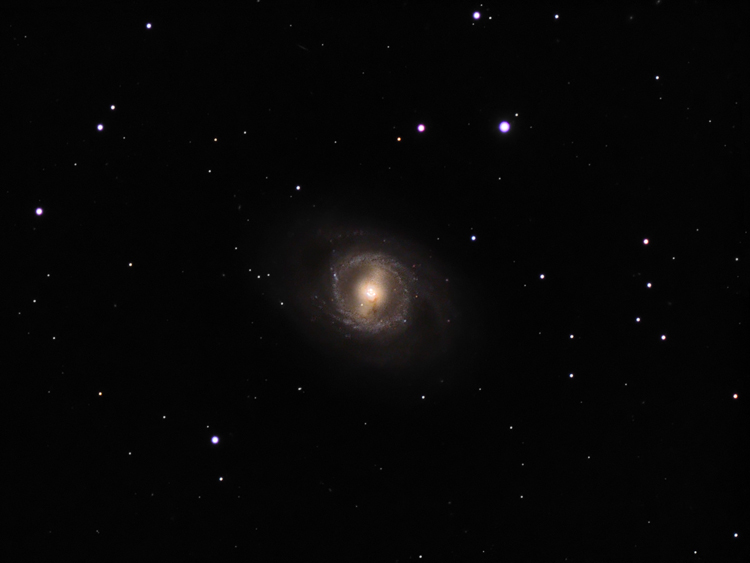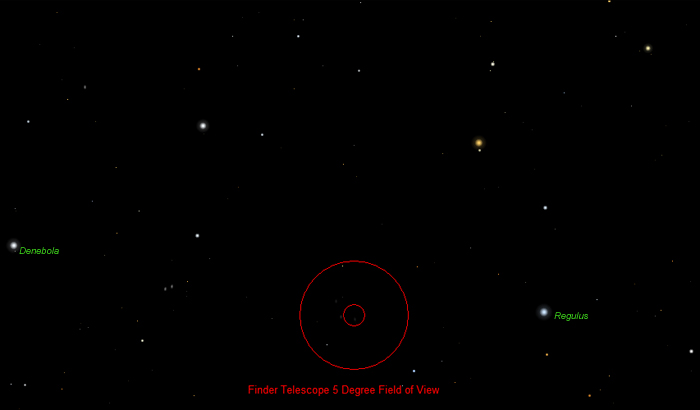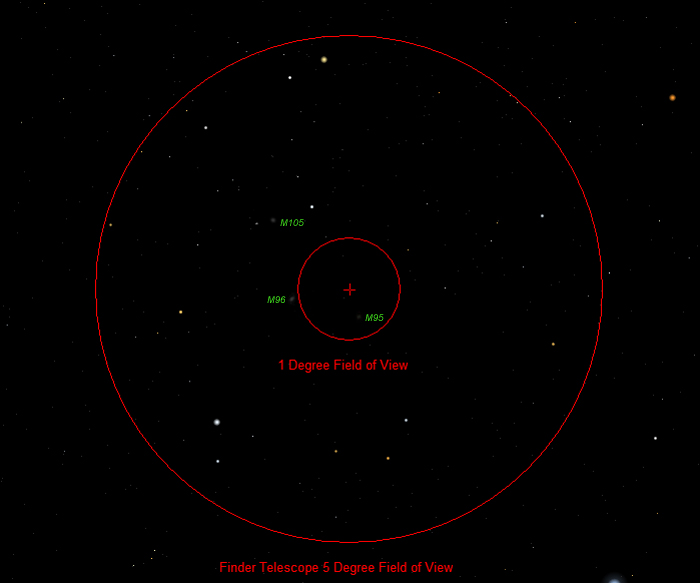There are lots of small background galaxies present in the image. Most just look like faint out-of-focus stars. My favorite is a tiny edge-on galaxy near the top center. Finding M95: Messier 95, Messier 96 and Messier 105 form a triangle along the belly of Leo. Although all of the Messier objects can be seen with a 2" telescope, you will have to work a little harder on this trio, as they are a more challenging. You will want a clear night without the Moon present, and you will want to be away from city light pollution as far as possible. The chart below shows a wide field view of the constellation Leo, with the bright stars Regulus and Denebola marked. The three faint spots near the center of the red circles are the three galaxies. The bottom illustration zooms in to show you a finder scope (5 degree) field of view and a telescope (1 degree) field of view. One relatively easy way to center your telescope on the field of view shown below is to first center Regulus in your telescope's field of view, turn off your clock drive if you have one, and just wait exactly 36 minutes for the Earth to point your scope at the galaxies. You should see the field of view shown in the bottom illustration. At the correct time, first look carefully for the star patterns shown. Depending on your optical configuration, the pattern may be inverted (reflector or refractor with no star diagonal) or flipped left to right (with star diagonal). Once you match the brighter stars to the finder chart locations you can concentrate on trying to see the faint light of the galaxies. You will probably not be able to see the galaxies in your finder scope. Messier 96 is the easiest of the three to see, then Messier 105, with Messier 95 being the faintest. All will appear as faint small patches of light. Try using averted vision, looking to one side of where you think the galaxies should be. Another old trick is to lightly tap the telescope tube. Your eyes can sometimes catch the motion of a threshold object in this way and make you aware of it. Finally, if you don't see the galaxies, you can always wait for a better night! Clicking on the illustrations below will take you to a black-stars-on-white-background printable chart that will save you a little printer ink.
Wide Field View: Narrow Field View:
|
||||||||||||||||||||


